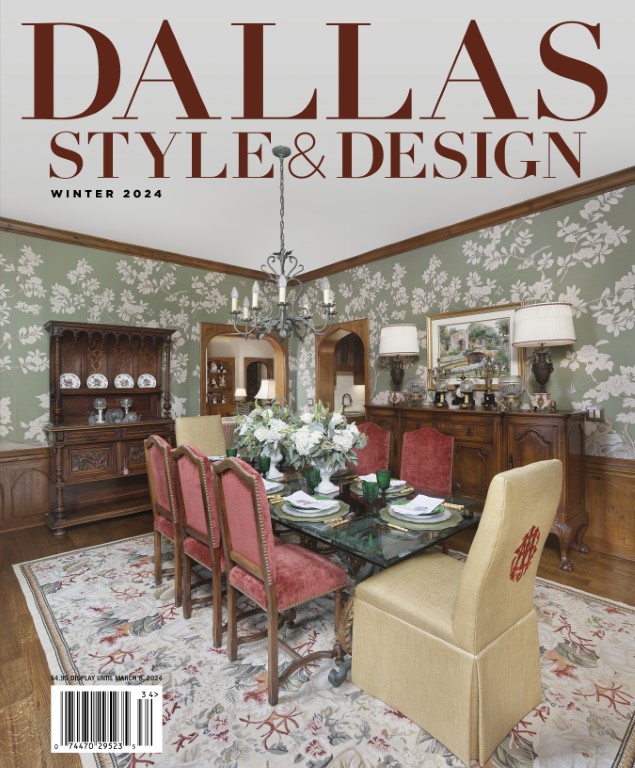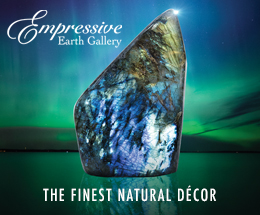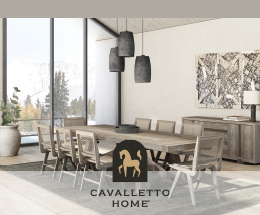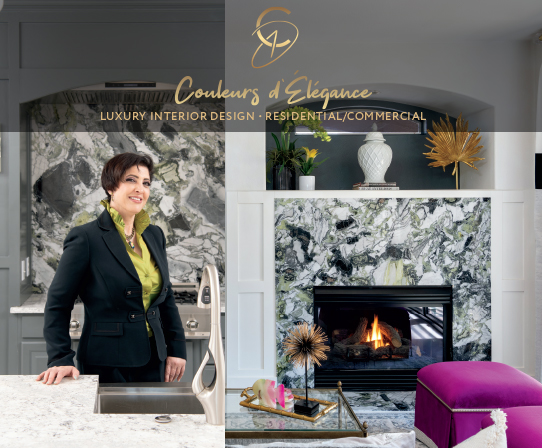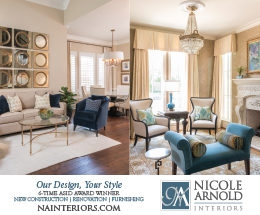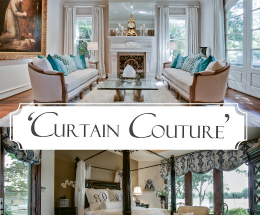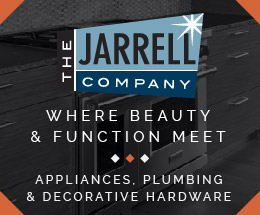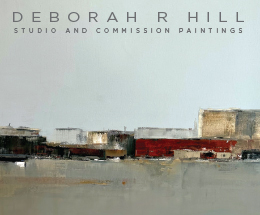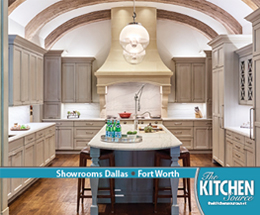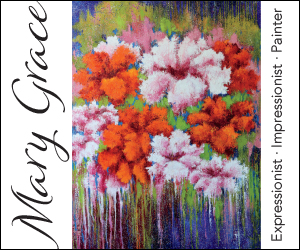When real estate developer Craig Hall, founder of Hall Group, was 18, he purchased his first property to become a “Good Guy” landlord. He used $4,000 of his own money, which he had saved over approximately 10 years.
Today, Hall deals in hundreds of millions of dollars and is responsible for the largest office developments in Frisco, HALL Park—an anchor to the $5 billion mile, which is also home to Jerry Jones’ Dallas Star, the headquarters for the Dallas Cowboys. Hall is also actively involved in promoting the arts, and he’s instrumental in Frisco’s plan to have its own Performance Arts Hall, a project similar in scope to downtown Dallas’ Arts District—another project the Hall Group was involved in.
Dallas Style & Design wanted to learn more about what inspires and drives Hall.
You launched your company at age 18 with $4,000. What drove you to start it?
Perhaps the best place to start is, how did I get $4,000? From age 8 on I was either starting a business or getting part-time work and saving as much money as possible. During those days I had an advanced lemonade-type stand with a drink called “Green Rivers.” Then, at one point, I sold Cutco Knives door to door, and another time I sold coffee and tea machines to doctors and dentist offices. I then developed a very large lawn mowing company and hired my brother and other employees.
When I was 16, I ran for and became “Mayor for a day” in Ann Arbor, Michigan. Being “Mayor for a day” meant I got to learn about key issues happening in the city. One of the key issues that Ann Arbor had in those days was tension between student tenants and local landlords. There were rent strikes and conflicts between people renting older apartments and houses on the University of Michigan campus and the owners/landlords. After learning about these issues, I knew I wanted to do something to help make a change. So, when I turned 18, I looked for a student house that I could buy with my $4,000 as a down payment, to prove that you can be a “Good Guy” landlord. That was my motivation. My plan was to be in real estate for two years and then become a social worker. In those days I wrote poetry as a hobby and always wanted to be a social worker and help people.
HALL Park was one of the first developments in Frisco and is a cornerstone of continuing development. It was recently announced that you have plans to include a Performing Arts Hall. Can you tell us about that?
Frisco is a great city, and in my view, every great city should have culture as one of its key offerings for citizens. Dallas has a great Arts District, but given the increased traffic, getting from Frisco to Dallas can be difficult for people to come to the opera or symphony, and it makes for a very long evening. In any event, with Frisco’s growth, why shouldn’t it have its own performing arts center?
 We have offered to donate the land as well as a good portion of the parking to the city to help make this happen. City initiatives like this are difficult to do because they require a lot of public commitment and money as well as private sector commitment and money. We are willing to be helpful in any way we can, but it needs to be led by the people in Frisco who also want to make this a priority. Recently, I spoke to numerous groups and attended many meetings in the Frisco area, and when the performing arts center was brought up everyone was positive and excited about making this happen. In addition, the Mayor of Frisco spoke at the “State of the City” luncheon, and when he brought up the arts and a performing arts center people in the audience cheered. He mentioned the location at HALL Park and my willingness to donate the land to a crowd of over 500 business leaders. This was a strong sign that there is support, and we are hopeful it will move forward.
We have offered to donate the land as well as a good portion of the parking to the city to help make this happen. City initiatives like this are difficult to do because they require a lot of public commitment and money as well as private sector commitment and money. We are willing to be helpful in any way we can, but it needs to be led by the people in Frisco who also want to make this a priority. Recently, I spoke to numerous groups and attended many meetings in the Frisco area, and when the performing arts center was brought up everyone was positive and excited about making this happen. In addition, the Mayor of Frisco spoke at the “State of the City” luncheon, and when he brought up the arts and a performing arts center people in the audience cheered. He mentioned the location at HALL Park and my willingness to donate the land to a crowd of over 500 business leaders. This was a strong sign that there is support, and we are hopeful it will move forward.
Why are the arts so important to you?
Art moves our soul. It touches us, it makes us think, it makes us laugh. All of that enriches life and makes any otherwise sterile, cold, commercial project more interesting and, hopefully, more warm, exciting and inviting. By the way, this goes for not just visual arts but all arts. My mother was an art teacher and an artist and I guess it was in my blood so to speak.
How have design, development and art changed your life?
Where do I begin? To me, design, development and art are just an integral part of my life. It is so much fun to create spaces and to work with talented architects in making dreams become reality. To be able to share my passion for collecting art with people in the very spaces that we create, with teams of architects and others, is really a special privilege and honor. One of my favorite pastimes is watching people take wedding, prom and graduation photos, take their family photos, and get engaged in front of art at properties that we own.
You recently were quoted as saying, “Suburban office parks are yesterday’s news.” What did you mean? And, what does the future hold for this type of development?
Real estate is changing, just like so many other things in our world today. The combination of technology, globalization and just cultural changes in our society are all factoring into changing how we use real estate. Not that many years ago, malls were very popular; they were gathering places and places of great commerce. Malls were a favorite investment for investors. Then, malls became obsolete and yesterday’s news because the internet came along with Amazon and other virtual stores competing with malls. In the office park world, it is similar. Suburban office parks were automobile oriented. They were a place you’d go to work and then leave. Today’s millennial workers want to be able to walk from their office to a place to eat, a place to get a drink, a place to go sit in the park, and a place to live. In short, the live, work, play model is key and a more walkable environment is rapidly taking over from the old suburban drive-to environment. For all of those reasons we went from being HALL Office Park to being HALL Park. That is not just a subtle wording change; it is the beginning of some real follow-up in change, which we intend to move toward a more coordinated, walkable, exciting environment.
What do you wish the public knew about HALL Group?
That we really care about being responsible contributors to the communities we serve as well as on a greater basis to our country and beyond. We believe business can and should be contributing to society and not just talking.
What future plans are in store for the HALL Group?
HALL Group is in five business areas. First we own real estate assets. Most notable is HALL Park, our 2.5 millionsquare- foot development in Frisco. We also have a large office building near the airport, called Freeport. In addition, we have our HALL Arts development in the heart of the Arts District, which includes two large underground garages with parking for over 2,200 people. Our goal on all of our assets is to manage them for long-term quality rather than short-term cash flow. We will continue to add to our asset portfolio. We have no partners in these properties.
 Our second area is real estate development. We currently just completed our 17th office building at HALL Park, with plans underway for the 18th. At HALL Arts, we are under construction for phase two of our project, which will include a 28-story residential tower and a 183-room, 11-story high-end boutique hotel.
Our second area is real estate development. We currently just completed our 17th office building at HALL Park, with plans underway for the 18th. At HALL Arts, we are under construction for phase two of our project, which will include a 28-story residential tower and a 183-room, 11-story high-end boutique hotel.
Our third area is our wine business. We have three wine brands: HALL, which is Cabernet from Napa Valley. WALT, which is Pinot and Chardonnay with vineyards within 1,000 miles of each other, from Oregon all the way to Santa Barbara. And, our newest brand is BACA, a Zinfandel from high-end vineyards. We look to continue our growth with all three brands and to provide a luxury, high-end experience and product by being the largest direct-to-consumer wine brands in the country (maybe the world) at our quality levels.
Our fourth area is HALL Structured Finance. In many ways this is our fastest growing company. Last year we were the third largest for construction loans for hotels in the United States. Our specialty is construction lending due to banks finding it difficult because of all the administrative issues. Additionally, regulators discourage banks from these activities. Our hope is to do $400 to $500 million in loans this year. These loans are not from an outside fund; they are all of our own funding.
And fifth, we do a small amount of other investing, and in particular some venture capital and angel round investing. We are not intending to gear up in this area and are intending to keep this a moderate roll.
The common plan for all of these ventures is to focus carefully on set growth goals and not to try to be all things to all people. Moreover, we want to be a part of our communities and, on a broader basis, responsible contributors to our society. We consider the ability to be in business and serve our customers as well as each other a privilege and an honor.
You are invested in teaching and supporting future entrepreneurs. Why is this important to you?
I strongly believe that entrepreneurship is integral to the uniqueness of the American Dream. When you are an entrepreneur it is all about starting something new, developing it, and part of that is about the close ties to the freedoms needed to take risks and dream and turn them into reality.
When I was 18 and bought my first rooming house with all the money I had saved, I had no idea at that time how lucky I was that I was able to do that. In many ways the world has become more difficult, from a regulatory and capital availability standpoint, to start a business. While people can still become entrepreneurs and start businesses, my hope is that we in the country take actions to improve the availability of capital and further encourage entrepreneurship. I am heartened by the amount of nonprofit support for mentoring and helping young entrepreneurs, and at the same time our numbers of new start-ups have been trending downward for the last few decades. Particularly, the Great Recession was a real setback to entrepreneurship. Millennials don’t start new businesses as fast as the baby boomers did at the same time in their lives. This is understandable because they have copious amounts of debt and don’t own homes on the same level that the baby boomer generation did. We need to take all of these issues seriously in our country and do things to improve the environment for entrepreneurship.
What is the one design item you cannot live without?
I love light. In terms of design I believe we need natural light. It helps stimulate our ability to enjoy and appreciate everything else around us in our environment.
If you could have dinner with three people (living or dead), who would they be and why?
For sure the first one would be my wife. The next would be Nelson Mandela. My wife and I were fortunate enough to meet him after he got out of prison, and he is perhaps the most exceptional person I have met. Third is another amazing person that we were fortunate enough to meet, Elie Wiesel, who as a survivor of the Holocaust and a great intellect, was always incredible to talk with. Mandela and Wiesel are two real survivors in so many ways. For me, life is about surviving until you thrive.

